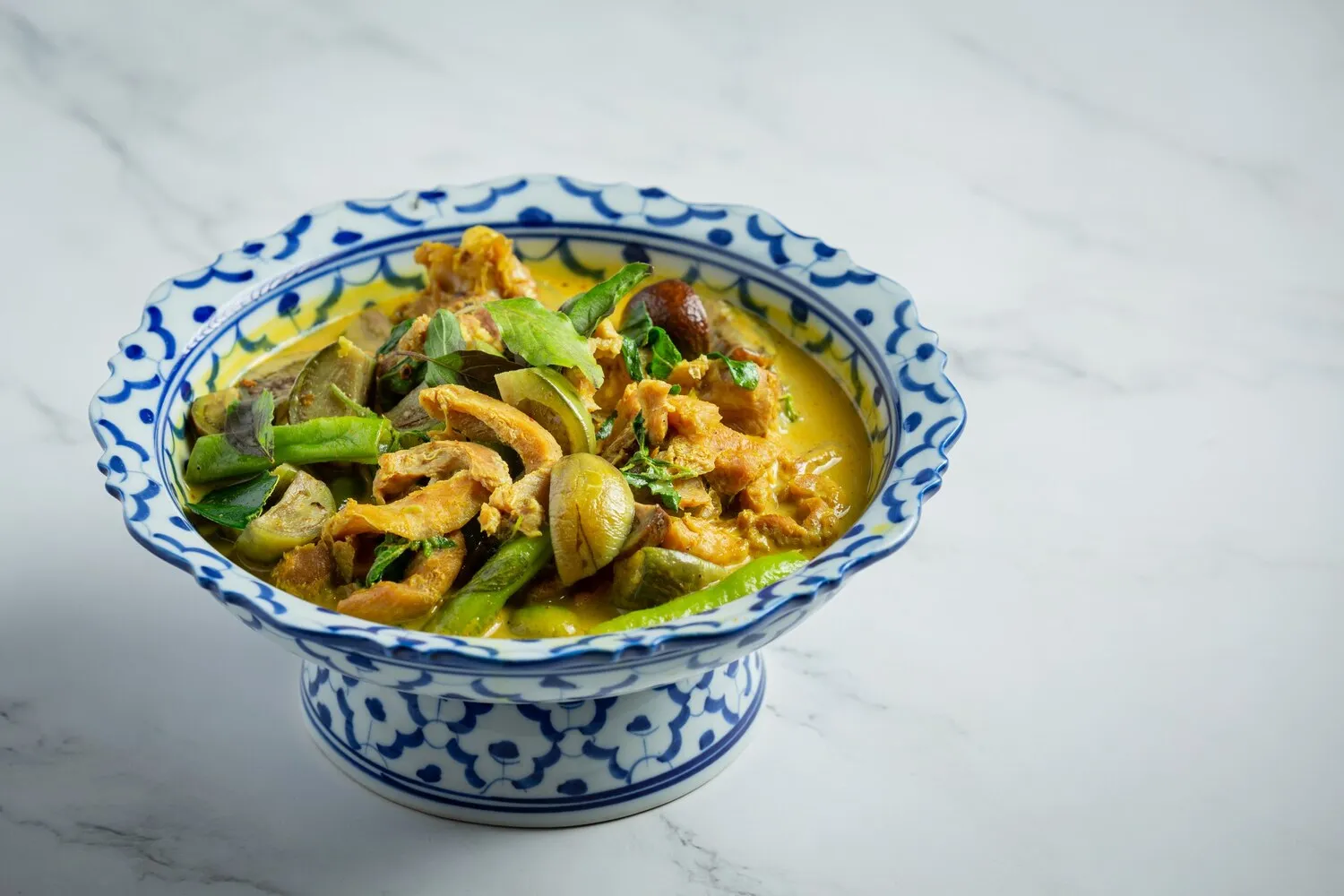
Green Curry
Thai green curry with coconut milk, bamboo shoots, bell peppers, eggplant, and your choice of protein (chicken, beef, tofu, or shrimp).
Nutrition Facts
* The % Daily Value (DV) tells you how much a nutrient in a serving of food contributes to a daily diet. 2,000 calories a day is used for general nutrition advice.
Thai cuisine has been influenced by neighboring countries and cultures over centuries, incorporating elements from India, China, Malaysia, and others. Curry dishes likely arrived via Indian influences, adapting over time to use local ingredients and develop unique flavor profiles. Green curry, as a distinct dish, is likely a more modern creation than red or yellow curries.
Green curry is a staple in Thai cuisine, reflecting the importance of balance and harmony in flavors. It's a dish often enjoyed in both casual and formal settings, showcasing the versatility and cultural significance of Thai food.
Balance of Flavors
Thai cuisine emphasizes the balance of sweet, sour, salty, spicy, and bitter flavors. Green curry perfectly embodies this principle.
Communal Eating
Thai meals are often served family-style, with multiple dishes shared among diners. Green curry is a common component of such meals.
Regional Variations
While green curry is widely popular, regional variations exist, with different areas emphasizing certain ingredients or flavor profiles.
Green curry is known for its vibrant and complex flavor profile, balancing heat, sweetness, savory notes, and herbaceousness. The primary flavors come from green chilies, coconut milk, and a blend of aromatic spices.
The characteristic green color and heat come from fresh green chilies. Coconut milk provides richness and sweetness, balancing the spiciness. The green curry paste typically includes ingredients like galangal, lemongrass, kaffir lime leaves, coriander root, garlic, shrimp paste, and white peppercorns, creating a layered and aromatic base. Fish sauce adds a savory umami element. Bamboo shoots provide a slightly crunchy and earthy texture, while bell peppers offer sweetness and color. Eggplant absorbs the flavors of the curry, adding a soft and slightly bitter component. The choice of protein (chicken, beef, tofu, or shrimp) contributes its own distinct flavor and texture to the overall dish.
Choosing the Right Chilies
The type and quantity of green chilies used will determine the heat level. Experiment with different varieties to find your preferred spice level. Bird's eye chilies are very spicy, while other types can offer a milder heat.
Making Your Own Paste
While store-bought green curry paste is convenient, making your own allows for greater control over the flavor and freshness. Fresh ingredients will yield a more vibrant and complex curry.
Adjusting the Sweetness
The sweetness of the coconut milk can vary. Taste and adjust the sweetness level by adding a touch of palm sugar or regular sugar, if needed.
Simmering for Flavor
Allow the curry to simmer gently for at least 15-20 minutes to allow the flavors to meld together and deepen. Avoid boiling vigorously, which can cause the coconut milk to separate.
Explore additional Curry dishes and restaurants
Explore CurryDiscover top dining spots and culinary experiences in Bregenz.
Explore BregenzLearn more about the food culture, restaurant scene, and culinary heritage of Austria.
Explore Austria